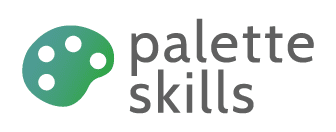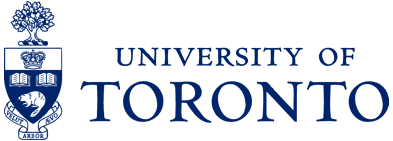In our previous post on demand-driven upskilling programs, we looked at what kinds of questions to ask employers when with engaging them, and how to get to the heart of the problems they face. In this article we’re going to talk about how to analyze what you hear when you ask those questions, and how to use these insights to inform product design.
Before starting our employer engagement, we heard a lot about the skills gap in Canada—employers struggling to find the right talent to fill roles. So prior to designing our upskilling program, we needed to know what skills employers look for, and how they evaluate if a candidate has those skills. This information would also tell us what skills are in demand, and give us data to see if the labour pool actually lacks these skills. From there, we could start to build a program around improving these skills. During our customer discovery sessions, we asked a number of questions to understand what it takes for an applicant to land a job offer, including:
- What kinds of candidates do you generally hire and what do you look for when hiring them?
- What talent pools do you recruit from, and how often do you deviate from your job post requirements (ie. how often do you hire workers with different credentials or work experience than what you had asked for)?
- And, most importantly: How do you decide to hire someone?
Hiring standards
We learned a lot about the hiring process from asking these questions. Employers look for a mix of technical skills, such as software development, and ‘soft’, or ‘business skills’. Technical skills are easier to evaluate as they are tangible. Employers can test them through interview assignments that replicate on-the-job tasks, or review previous work portfolios. But employers also say they are looking for candidates with growth mindsets who are adaptable, are problem solvers, and can take initiative while hitting the ground running. These traits are especially valued when employers need new talent to contribute right away.
Assessing these soft skills is more challenging than measuring technical skills. There isn’t a simple test or credential that will immediately show employers if a candidate has a growth mindset. Regardless of whether they are talking about technical skills or soft skills, when they are describing what they are looking for, they are really describing their standards for talent—the baseline of what they need to see to hire someone. We believe that employers are the only ones who can do that, and we never ask them to change or deviate from their standards.
Using indicators
It can be challenging to assess a candidate’s ability to meet these standards through the regular hiring process. So naturally, employers have created a series of indicators to help. These indicators usually include work experience, sector-specific experience, referral networks, and credentials. These become the proxy indicators that employers use to measure attributes like a growth mindset, or the ability to hit the ground running, in addition to other skills.
However, we know these indicators can be deeply flawed. Credentials may not give candidates the practical experience employers are looking for (Brookfield); employees hired through a referral don’t always outperform non-referrals (HBR); and using industry experience as an indicator in emerging industries will lead to a smaller pool of candidates because fewer people have worked in that sector. An over-reliance on these indicators may create an inflated sense of scarcity in the talent market, and increase the challenges and costs employers face in securing talent.
Managing risk
At Palette, we understand that for many companies, hiring is a risk management process. Employers rely on the methods of evaluation we’ve just discussed as a way to reduce the risk associated with hiring a new employee. Startups and scale-ups don’t always have the time—or the dedicated HR teams—to explore new ways to evaluate talent with new indicators that better tell them what they need to know about a candidate. Thinking differently about who to hire takes time and capacity—resources few overstretched talent acquisition teams have. And hiring the wrong candidate can carry big costs and consequences, especially in a small firm.
While making the wrong hiring decision in a firm of 500 may have a negative impact on a team, a similar decision in a firm of 50 people looking to scale can be detrimental to the whole firm and its growth. However, in sticking to these conventional indicators, employers also risk missing out on qualified talent that may come from outside their network or current sector, or force them to compete for expensive talent they can’t afford. Many Canadian companies are trapped in this conundrum—they desperately need talent, but don’t have the internal capacity to develop new pipelines or train workers. As a result, they can’t take the business risk of hiring unconventional talent.
Creating new indicators
If only one or two companies were experiencing this challenge, we’d say it’s a business problem. But when companies across the board, regardless of region or sector, are describing the same problem with the same conditions, it’s a systems problem. And systems problems require systems-based solutions.
Part of Palette’s mission is to create a system where employers can address talent shortages as they arise. A key part of developing that system is to build a framework for program development that factors in the risk management lens of a company as well as their limited capacity, while recognizing that unlocking new talent pipelines requires new indicators that provide new perspectives on talent without lowering business standards. After we understand what standards employers are looking for in a particular role, we build a program that will deliver on those standards. That involves a recruitment model that prioritizes the characteristics and foundational skills employers are seeking. We also ask employers to participate in the program delivery—not just in the curriculum development—which is vital. Not only does it make the program more relevant to industry, it also gives employers the chance to work with these new indicators.
Let’s use our SalesCamp program as an example. We knew companies were looking for people who were good with customers, resilient, and determined. We took those qualities and applied them to our search for SalesCamp participants. In particular, we looked for participants with customer-facing experience, as well as experience handling a lot of different kinds of requests. They needed to be able to operate in a fast moving environment and deal with rejection well. Bartenders, retail workers, and hospitality workers all fit these requirements and became our target untapped talent pool. We knew these people have what it takes, but the tech companies we were working with were skeptical.
With this in mind, we designed the program with heavy employer engagement. So for example, employers joined the program to simulate cold calling with participants, delivered guest lectures, listened to and evaluated sales pitches, collaborated on case studies, and of course networked. Working alongside participants gives employers a chance to explore alternative indicators, such as how does this person handle rejection? When I give them feedback, how quickly do they adapt? When they explain something to me, is it clear and persuasive? It doesn’t take more than an hour of working alongside a group of people in a simulated work environment to gain initial answers to those questions, and these answers provide a better window for an employer to see what a prospective employee would be like as a teammate than a resume with previous work experience ever could.
If you are a program designer thinking about upskilling programs, remember that the earlier you start to work with employers and begin designing with them, the stronger your outcomes will be. That’s why at the end of the one week bootcamp section of SalesCamp, half of our participants already have interviews lined up. Our employer partners trust that these participants meet their standards. And our track record of successful job placements is what keeps our employer partners coming back.
We help fast-growing companies hire quickly by introducing them to pre-vetted, talented, highly skilled alumni. Become part of our network of businesses and community partners from across Canada today.







